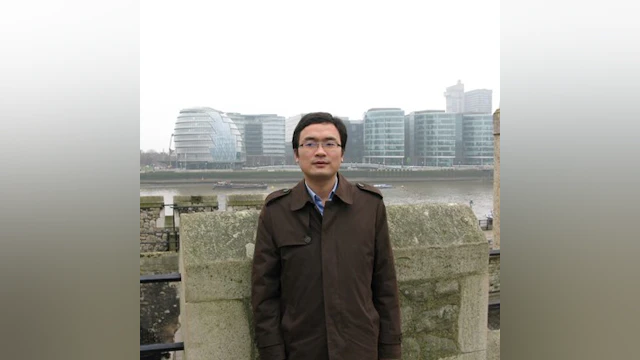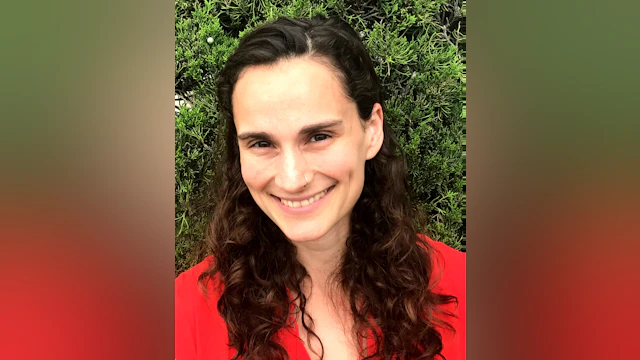Research Roundup June 2023: Recently Published Findings From AFSP-Funded Studies
June 6, 2023 – 4 min read
By AFSP

The Research Roundup is a regular update of recently published findings in suicide prevention research. AFSP-funded studies included in this roundup examined how…
- We can learn more about why older adults in China die by suicide
- Handgun divestment (getting rid of guns) impacts suicide rates
- Schools offer a unique opportunity to support suicide prevention for LGBTQ youth, and
- Genetic differences in the hippocampus can play a role in suicide risk

Researcher: Liang Zhou, MD, PhD
Institution: The Affiliated Brain Hospital of Guangzhou Medical University
Grant Type: 2013 Standard Research Grant - $90,000
Grant Title: Being Left Behind and Suicide among Rural Chinese Elderly: A Psychological Autopsy Case Control Study
In China, suicide rates are higher in rural areas than in urban areas, and the suicide rate of elderly adults is the highest among all age groups. With rapid urbanization in the past few decades, many elderly adults in rural China are left behind because their children move to work and live in cities. Previously, there have been no studies of this population in China to help understand what may be contributing to this rate.
With the aim of acquiring a more comprehensive understanding of rural elderly adults’ suicide, Dr. Liang Zhou conducted interviews with people who were familiar with 242 older adults who died by suicide. Out of nine main categories garnered from the interviews, physical illness, psychological distress, and interpersonal conflicts were the most frequently reported. These findings provide areas for future research with the intention of improving interpersonal and problem-solving skills for rural elderly adults.
Citation: Bai, X., Zhou, L., Mo, Q., Jia, C., & Ma, Z. (2022). Understanding the Reasons for Suicide Among Older Adults in Rural China Using In-Depth Interviews. Crisis, 43(5), 391-397, http://dx.doi.org/10.1027/0227-5910/a000799.

Researcher: Sonja Swanson, ScD
Institution: University of Pittsburgh
Grant Type: 2018 Standard Research Grant - $99,365
Grant Title: Handgun Divestment and Suicide Risk
Firearm divestment (i.e., firearm owners getting rid of their guns) is one of many promising public health approaches to reducing firearm violence, such as lethal means counseling, buyback programs and red flag laws. And although there is a strong correlation between having firearms in the home and an increased risk of suicide, little is known about how much suicide risk declines when firearm ownership ends.
After examining data from 523,182 handgun owners, Dr. Sonja Swanson estimated that divestment reduced firearm suicide risk by 50% or more, and likely reduced overall suicide risk as well. Having direct estimates of the effect of divestment on suicide risk can inform the expected benefits from public health efforts to reduce firearm violence.
Citation: Swanson, S. A., Studdert, D. M., Zhang, Y., Prince, L., & Miller, M. (2023). Handgun Divestment and Risk of Suicide. Epidemiology, 34(1), 99-106, http://dx.doi.org/10.1097/ede.0000000000001549.

Researcher: Marisa Marraccini, PhD
Institution: University of North Carolina
Grant Type: 2018 Standard Research Grant - $99,000
Grant Title: School Re-entry Guidelines for Adolescents Post-Hospitalization for Suicidal Thoughts and Behaviors
LGBTQ youth face a higher likelihood of experiencing suicidal thoughts and behaviors (STB) compared to their heterosexual and cisgender peers. Factors such as homonegativity (negative attitudes or behaviors towards the LGB community) and anti-queerness contribute to this risk while also hindering protective factors against suicide. School settings have been a focal point for suicide prevention and have the potential to provide support and positive experiences that can help LGBTQ students cope with risk factors and reduce STB.
Building upon her AFSP grant, Dr. Marisa Marraccini was funded by the NIMH to conduct a systematic review of findings from 44 studies that examined school-related factors of suicidal thoughts and behaviors in LGBTQ students. The findings indicated the need to extend safety and acceptance measures beyond schools to district and state policies. The studies also highlighted that schools can play a unique role in addressing minority stress by promoting positive social connections and a safe environment for LGBTQ students.
Citation: Marraccini, M. E., Ingram, K. M., Naser, S. C., Grapin, S. L., Toole, E. N., O’Neill, J. C., Chin, A. J., Martinez, R. R., & Griffin, D. (2022). The roles of school in supporting LGBTQ+ youth: A systematic review and ecological framework for understanding risk for suicide-related thoughts and behaviors. Journal Of School Psychology, 91, 27-49, http://dx.doi.org/10.1016/j.jsp.2021.11.006.

Researcher: Sujan Chandra Das, PhD
Institution: University of California, Irvine
Grant Type: 2019 Pilot Research Grant - $30,000
Grant Title: Identifying Molecular, Cellular, and Synaptic Changes Associated with Suicide
By studying the brains of individuals who died by suicide in comparison to those who died from other causes, we can analyze gene changes and variations in brain cells (neurons) and the spaces between them (synapses) where information is exchanged. The hippocampus is a part of the brain that is involved in memory and cognition (thinking) and has been identified as a brain region that could play a role in suicide.
In his study examining hippocampal tissue from 50 deceased individuals, Dr. Sujan Chandra Das identified four genes that had differences between people who died by suicide and those who did not. In addition to this, Das also found differences in synapse structure, and overlapping evidence for other previously identified genetic differences. These findings further solidify and build upon previous knowledge about the role of the hippocampus in suicide. In the future, this may help clinicians personalize interventions based on genetic testing.
Citation: Das, S. C., Schulmann, A., Callor, W. B., Jerominski, L., Panicker, M. M., Christensen, E. D., Bunney, W. E., Williams, M. E., Coon, H., & Vawter, M. P. (2023). Altered transcriptomes, cell type proportions, and dendritic spine morphology in hippocampus of suicide deaths. medRxiv, 2023.2001.2028.23285121, http://dx.doi.org/10.1101/2023.01.28.23285121.
Learn more about the AFSP research grants featured in this monthly roundup, as well as others, here.